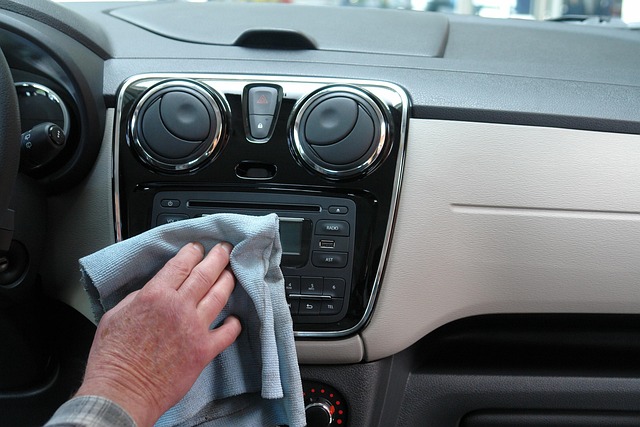Everything You Need to Know About Lawn Mowers and Their Prices in 2025
Maintaining a beautiful lawn requires the right equipment, and choosing a suitable machine can feel overwhelming with so many options available. From traditional push models to advanced robotic systems, understanding the different types, features, and pricing structures helps homeowners make informed decisions. This guide explores current trends, compares popular models, and provides pricing insights to help you find the right fit for your yard maintenance needs.

When it comes to yard maintenance, selecting the right equipment can make all the difference between a chore and an enjoyable outdoor activity. The market has evolved significantly, offering everything from manual reel models to sophisticated automated systems that handle the work independently. Understanding what drives pricing, which features matter most, and how different models compare allows homeowners to invest wisely in equipment that matches their lawn size, terrain, and maintenance preferences.
What Influences Lawn Mower Prices in 2025?
Several factors determine how much you can expect to pay for yard maintenance equipment. Power source plays a significant role, with gas-powered models typically ranging from moderate to high price points due to engine complexity, while electric and battery-powered options vary based on battery capacity and runtime. Cutting width affects pricing as well, with wider decks generally commanding higher prices because they cover more ground efficiently. Additional features like self-propulsion, adjustable cutting heights, mulching capabilities, and smart technology integration all contribute to the final cost. Brand reputation, build quality, and warranty coverage also influence pricing structures across the market.
Current Lawn Mower Trends Shaping the Market
The industry has seen notable shifts in consumer preferences and technological advancements. Battery-powered models have gained substantial market share as lithium-ion technology improves, offering longer runtimes and shorter charging periods without the noise and emissions of gas engines. Robotic models continue growing in popularity among homeowners seeking automation, with improved navigation systems and smartphone connectivity. Sustainability concerns drive demand for electric options, while traditional gas models remain favored for large properties requiring extended operation times. Multi-function designs that combine mowing, mulching, and bagging capabilities appeal to consumers seeking versatility. Zero-turn models, once primarily commercial equipment, have become more accessible to residential users with larger yards.
Lawn Mower Comparison: Understanding Different Types
Push reel models represent the most basic option, requiring manual effort but offering quiet operation, zero emissions, and minimal maintenance at the lowest price point. Electric corded models provide consistent power without refueling but limit mobility to the cord length, making them suitable for small to medium yards. Battery-powered walk-behind models offer cordless convenience with varying runtimes based on battery capacity, ideal for properties up to half an acre. Gas-powered walk-behind equipment delivers robust performance for larger areas with longer continuous operation. Riding models suit properties over one acre, with options ranging from traditional lawn tractors to zero-turn designs offering superior maneuverability. Robotic systems provide hands-free operation, automatically maintaining lawn height within programmed boundaries, though they require initial setup and periodic maintenance.
Lawn Mowers Models 2025: What to Expect
Manufacturers continue refining existing technologies while introducing innovative features. Battery technology improvements extend runtime and reduce charging times, making cordless models more practical for larger properties. Smart connectivity allows users to monitor battery status, schedule maintenance reminders, and adjust settings through mobile applications. Enhanced safety features include automatic blade shut-off when operators release handles and improved rollover protection on riding models. Noise reduction technologies make gas models quieter while electric options remain nearly silent. Improved cutting systems deliver cleaner cuts with better mulching performance. Durability enhancements through reinforced decks and rust-resistant materials extend equipment lifespan. Ergonomic designs reduce operator fatigue with better handle positioning, vibration dampening, and comfortable seating on riding models.
Price Ranges and What You Can Expect to Pay
Understanding typical pricing helps set realistic budget expectations. Entry-level push reel models start around $80 to $150, suitable for small lawns and environmentally conscious users. Electric corded walk-behind models typically range from $150 to $350, offering reliable performance for compact yards. Battery-powered walk-behind equipment generally costs between $250 and $800, with premium models featuring larger batteries and self-propulsion reaching higher price points. Gas-powered walk-behind models span $300 to $900, with commercial-grade options exceeding $1,000. Riding models start around $1,500 for basic lawn tractors and can exceed $5,000 for zero-turn designs with advanced features. Robotic systems represent the highest investment, typically ranging from $800 to $3,500 depending on coverage area and technological sophistication.
| Equipment Type | Price Range | Best For |
|---|---|---|
| Push Reel | $80 - $150 | Small lawns under 1,000 sq ft |
| Electric Corded | $150 - $350 | Properties up to 5,000 sq ft |
| Battery Walk-Behind | $250 - $800 | Yards up to 0.5 acres |
| Gas Walk-Behind | $300 - $900 | Properties 0.25 to 1 acre |
| Riding Tractor | $1,500 - $3,000 | Lawns 1 to 3 acres |
| Zero-Turn Riding | $2,500 - $5,000+ | Properties over 2 acres |
| Robotic System | $800 - $3,500 | Automated maintenance up to 1 acre |
Prices, rates, or cost estimates mentioned in this article are based on the latest available information but may change over time. Independent research is advised before making financial decisions.
Making the Right Choice for Your Property
Selecting appropriate equipment requires evaluating several factors beyond initial cost. Property size remains the primary consideration, as underpowered equipment struggles with large areas while oversized models prove impractical for compact yards. Terrain characteristics matter, with hilly properties benefiting from self-propelled or riding models while flat lawns work well with basic push designs. Storage space availability influences whether compact folding models or full-size equipment makes sense. Physical capabilities affect whether manual push models or powered assistance better suits your needs. Environmental preferences may prioritize electric options over gas engines. Maintenance willingness varies, with some users preferring simple designs requiring minimal upkeep while others accept more complex systems for enhanced features. Budget constraints naturally limit options, but considering long-term value through durability and operating costs provides better perspective than focusing solely on purchase price.
Investing in quality yard maintenance equipment pays dividends through years of reliable service and better lawn appearance. By understanding pricing factors, current market trends, and how different models compare, homeowners can confidently select equipment matching their specific needs and budget. Whether choosing a simple manual model or an advanced robotic system, the right equipment transforms lawn care from a tedious task into manageable routine maintenance.




